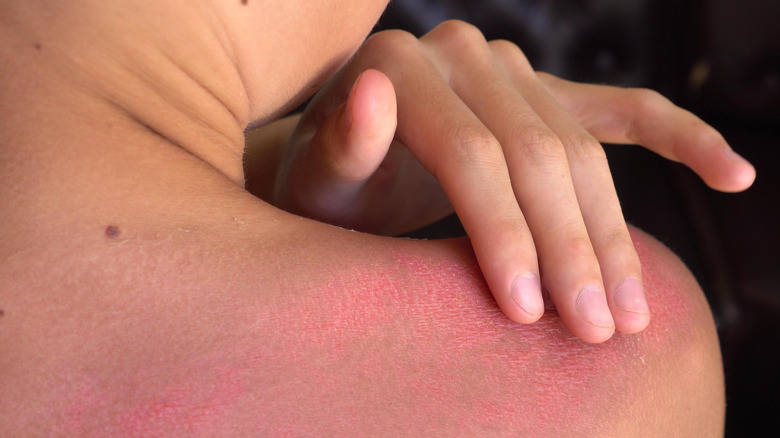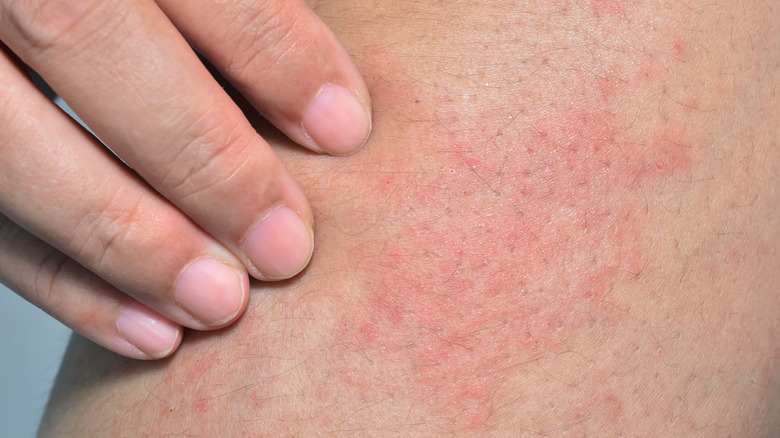The Big Difference Between Sunburns And Heat Rashes
Hot, sunny weather can be hard on the skin. Not only can you suffer from sunburns, but you can also experience rashes that cause discomfort, also known as a heat rashes. Many people may think they're the same, but there are telltale ways to distinguish between the two. First, sunburns occur after the skin has been overexposed to UV light, either by being outdoors or by using a tanning bed. It can cause pink or red skin, pain, swelling, and even fevers and headaches (via Mayo Clinic).
On the other hand, a heat rash appears similar to acne with raised red bumps on the skin's surface. This condition happens when skin cannot breathe and release its natural sweat. Specifically, a heat rash occurs when sweat ducts get blocked during very hot and humid weather. Skin folds, clothing rubbing against the skin, or other friction-causing elements, can increase one's risk, according to Mayo Clinic.
When sunburns and heat rash are severe
Both heat rashes and sunburns turn your skin red and can be very uncomfortable. But unless they're severe, they may resolve on their own. However, there are times you may need to seek medical attention. If you suspect a heat rash and the skin is leaking pus, or if you have swollen lymph nodes, fever, or chills, it may be time to call your doctor, according to Mayo Clinic. To alleviate symptoms, it can help to apply a cold compress and prevent sweating as best as possible.
For signs you have a severe sunburn, you'll want to watch for symptoms such as blistering, swelling, and signs of infection. Mayo Clinic recommends that anyone who has a fever of 103 degrees or higher, confusion, or fainting, seek medical attention immediately. Repeated exposure can cause health complications down the line, including precancerous skin lesions, skin cancer, and eye damage. Thus, it's important to take precautionary measures such as covering up with clothing when outside and wearing sunscreen.


